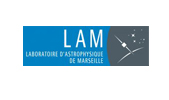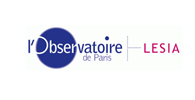FAQ
4 septembre 2017 ( maj : 16 janvier 2023 ), par
FAQ
Please do not hesitate to contact us at sphere-dc-req at univ-grenoble-alpes.fr is you have any questions. SPHERE-DC has now become the High Contrast Data Centre (HC(DC).
You need to click on the java client link to install the HC-DC client
(link is : wsrdata.obs.ujf-grenoble.fr:8080/sphere-server/sphere-client/sphere-client.jnlp). Access to the public data is made using the Login : public_user and the password public_user
Then choose "Browse process", select the Workspace you are interested as well as additionnal filters.
Two workspaces of public data are available
- calibrations_reduites : reduced calibration files
- PUBLIC_reduced_science : Level 1 and 2 reduced science data
See more about browsing and how to download below.
Important tips on browsing on the HC-DC client
This java client provides a graphical interface from which you can select datasets and filter them on many available criteria (RA, dec, date, program ID, target, filter, etc...), and then create a download script for all your selected data by right clicking on the selection and use the "Download script" option (see next FAQ question about downloading).
You have 2 ways to make a selection, either by browsing data (i.e. files) or by browsing processes (i.e complete data set at a given reduction step). To download reduced science data, we strongly advise to use "browse process" because by construction it provides consistent datasets. It also allows you to visualize which algorithm has been used.
Using Browse process : click on the "browse process" tab on the main DC-client.
The 2 levels of reduced science data made available by the HC-DC are outputs of 2 routines.
- To get level 1 reduced data - Reduced master cubes with wavelength, flux and parallactic rotation calibrations file-, in the filtering tab "Recipe", type "convert", wait for the client to propose you a choice
- select the recipe name "ird_convert_recenter_dc" to get IRDIS data.
- select the recipe name "ifs_convert_dc" to get IFS data.
- To get level 2 reduced data - calibrated stacks after various ADI algorithms have been applied, as well as associated detection limits-, in the filtering tab "Recipe", type "specal", wait for the client to propose you a choice and then
- select the recipe name "ird_specal_dc" to get IRDIS data.
- select the recipe name "ifs_specal_dc" to get IFS data .
Filtering.
- You can naturally apply any other available filtering criteria to narrow down your selection.
- Do not forget to click on "submit" after introducing a new filter, to be sure the client has actually updated the selection.
- You can get more information about the browsing and filtering options within the DC client by reading section 3 of the DC manual, or just hover your mouse on any field in the « filtering » tab to get dedicated info on this filering parameter.
- Also for most parameters you can enter partial info and the DC will propose you relevant completion, so it is better to look for GJ_285 by typing "285" and selecting GJ_285 rather than typing GJ285, without the "_" and getting nothing that matches ! The "Object" field comes from the fits header, hence what was manually written written in the OB. Some typos may have been made during the observation, so if you do not find your target, use the box "target", which will look in the database for the simbad resolved name, or use RA/dec.
How to download data from the HC-DC client ?
You can select the files (see tips about browsing above and indications to reach the different data levels) as usual : you can manually select subset of the displayed selection by clicking on specific lines of the dataset. As for any selection you can make a multiple selection by pressing "ctrl" and clicking or select a range with the "shift" key.
A right click on one line or your selection allows you to retrieve a script to download the data. Note that if you are interested in a given data level only you may want to choose "outputs" only (full will include inputs as well, i.e. the previous level data). At this stage you can choose a script applying to your selection or to all the displayed data.
The script must be made executable (for example chmod u+x script) before being launched.
What is in this public release ?
- A large part of the IRDIS and IFS science data acquired in P95
- Reduced calibrations files starting after March 2017 + some corresponding to previous observations but not exhaustive yet.
What is not in this public release ?
- No Zimpol data yet
- Polarimetric IRDIS data are not reduced, they will be on a short term basis
- IRDIS LSS mode data are not reduced yet
- Simple field tracking observations are only reduced to step 1 (However in this case a good stack can be obtained simply by collapsing the levelb1 master reduced cube to produce level 2 data ; they weill be avaible soon)
- IRDIS Observations without star centering sequence or observations with saturated or otherwise invalid star centering sequence are currently not available. We will make them available at level 1 only (without relative recentering of the left and right channels) in the coming weeks.
Note that a few PIs have requested to have a delay before their reduced data is publicly released, thos will be available soon.
Finally, if you are interested by a dataset and think it should be released, don’t hesitate to ask us and we’ll see what we can do for you.
What are the limitations of the final reduced images ?
Here are a few warnings and informations on the limitations of the data :
- It is well-known that the cADI and TLOCI image processing introduces some patterns in the images. It is therefore necessary to use dedicated techniques (for example by fitting the pattern) to extract photometric informations on a detection.
- The final reduced images make use of the whole data cubes. It is sometimes necessaruy to select the best images. We plan to produce some reduced images after selection in the future. In the meanwhile the cubes can be used to perform selections.














